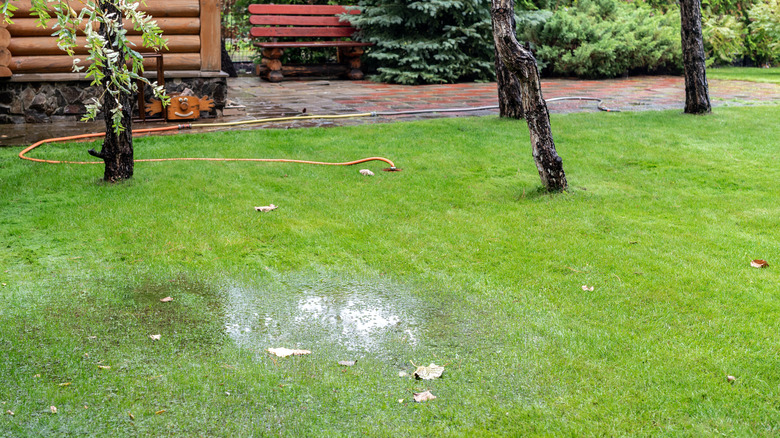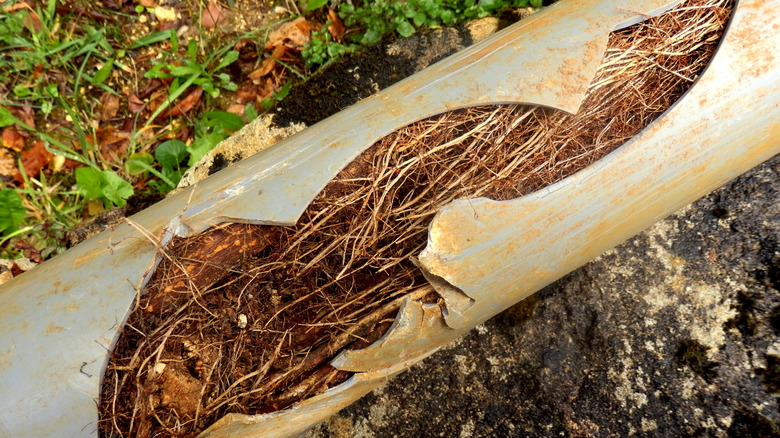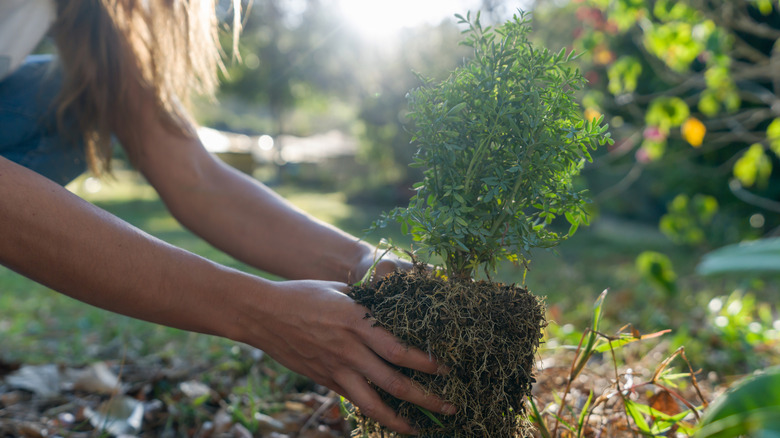What Your Waterlogged Lawn Is Trying To Tell You About Your Plumbing Problems
Homeowners spend plenty of time and stacks of dollars to make sure their lawns are in tip-top shape. If it hasn't rained in a while and you notice your grass feels soppy and soaked all of a sudden, that's a cause for alarm. It means you'll probably have to turn your eyes to your garden. Trees are an excellent and vital part of any yard, but sometimes, they can be the root cause of some pipe problems — emphasis on the root! Tree roots expand in strategic directions and if they happen to clash with your underground sewage pipes, they can harm the plumbing in your home and cause a catastrophe.
Trees purify the air, provide shade, stabilize the soil to prevent erosion, and serve as homes to wildlife. Their relevance to the environment and your immediate home space can never be overstated. However, some trees grow roots so disruptive that they interfere with and damage your sewage pipes by cracking or breaking them entirely. One way to tell that this is the case is if your lawn has waterlogged patches scattered around it, sinkholes, or if it smells of sewage. It's not a fun situation to be in, but thankfully, it doesn't have to stay this way forever.
Killing roots in pipes isn't enough if your pipes are damaged
When your pipes burst into the lawn, you will likely also notice it in the house — your drains might stop going down smoothly, and you'll hear bubbling coming from within. Once you determine that your waterlogged lawn is a result of burst or cracked pipes, locate the drain pipe that runs through your yard and into the main sewer line. If you need help finding it, you can call the national call-before-you-dig hotline, "8-1-1," so that you don't accidentally dig through a utility line.
Once located, the next step is to alleviate the root problem using rock salt. The idea is that flushing down 1.5 pounds of rock salt through your toilet will kill the tree roots and soak up the water, making the waterlogged lawn easier to deal with. However, this isn't a guaranteed approach and would likely do more harm than good. Rock salt can worsen the blockage because of its crystalline structure.
Using chemical root killers would be effective in killing some of the roots, but not all of them. They also won't remove the roots from the pipes. The wisest thing to do if you notice you have sinkholes in your lawn is to call your plumber so that they can handle the situation for good and replace any damaged pipes.
Trees you should plant with caution
Any tree can pose a threat to the integrity of your underground sewage system if they are positioned in the wrong place. However, there are some trees that are more likely to give you headaches with their ever-curious roots. You'll want to be careful when planting oak, elm, birch, maple, willow, and sycamore trees. While you don't have to forgo these trees completely, you can hire a professional landscape architect or plumber to situate them where they would be least likely to cause damage to your drain and sewer pipes.
The trees with roots that are less likely to disturb your pipes are magnolias, fan palms, cypress, and a lot of fruit-bearing trees. While you can be more lenient with where you put them, tree roots will always grow towards moisture and nutrients, so it's still a good idea to involve a professional who can help you make the best-informed decisions. Having your pipes damaged is an expensive mistake you'd rather offset from the beginning rather than pay for at the end of the day.


